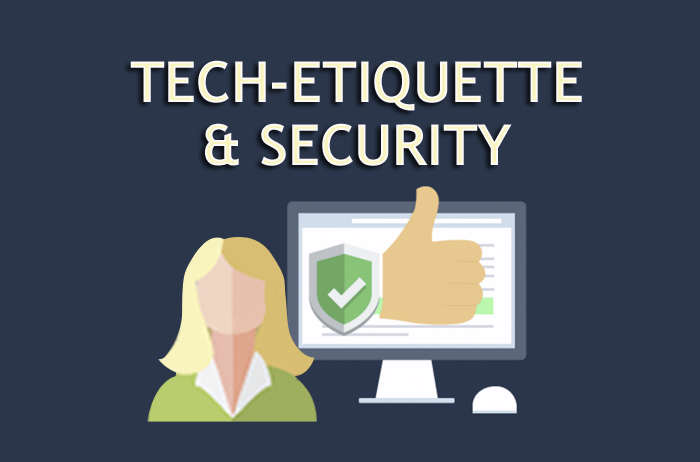Modeling Good Tech-Etiquette
Despite not being the classroom, it is still critical for educators to set clear expectations for students. It may be overwhelming for some educators who are using Zoom and other similar tele-conferencing platforms for the first time, but remember – YOU are in charge!
You can set expectations around “tech-etiquette” by modeling the behavior yourself as well as reviewing each expectation with the class. It might be helpful to have students take turns reading each one aloud.
These are some of the recommended “tech-etiquette” expectations during tele-conferencing sessions:
- Mute yourself, until you are ready to speak
- Keep your video on, if possible, so that the group can feel connected
- Remove distractions from your physical space
- Close out any unnecessary applications on your device
- Be sure to keep up attire and appearance the way you would normally at school (or work)
- Gather materials and use restroom before the session so you don’t need to get up frequently
- Be patient and kind with yourself and others – we are all adapting!
Use Hosting Features to Run a Great Session
When starting a Zoom call with students, or colleagues for that matter, you are the “host” and have the ability to control the session in a number of ways.
These are some of the hosting features included on Zoom:
- Muting and un-muting individuals and the group as a whole during the session
- Sharing your desktop or a certain application in order to provide visuals to your lecture
- Making one of the participants the host
- Giving screen sharing and mouse access to a participant
- Creating “break-out rooms” for small groups in order to stimulate discussion and collaboration
How to Run a Secure Session
You may have heard of “Zoom bombers,” or people who hack into teleconferencing sessions to spy on or disrupt the session in lewd ways.
In addition to the above features, these are some key security features to keep in mind as the host to prevent hacks:
- Enabling the “waiting room,” admittance of participants to the session 1 by 1
- Requiring a password for participants to enter the session
- “Locking” the session to block new participants from joining
Hopefully, these security and “tech-etiquette” tidbits will help you take control of your tele-conferencing sessions with your students and colleagues and make them even more engaging.
Happy Zooming!


